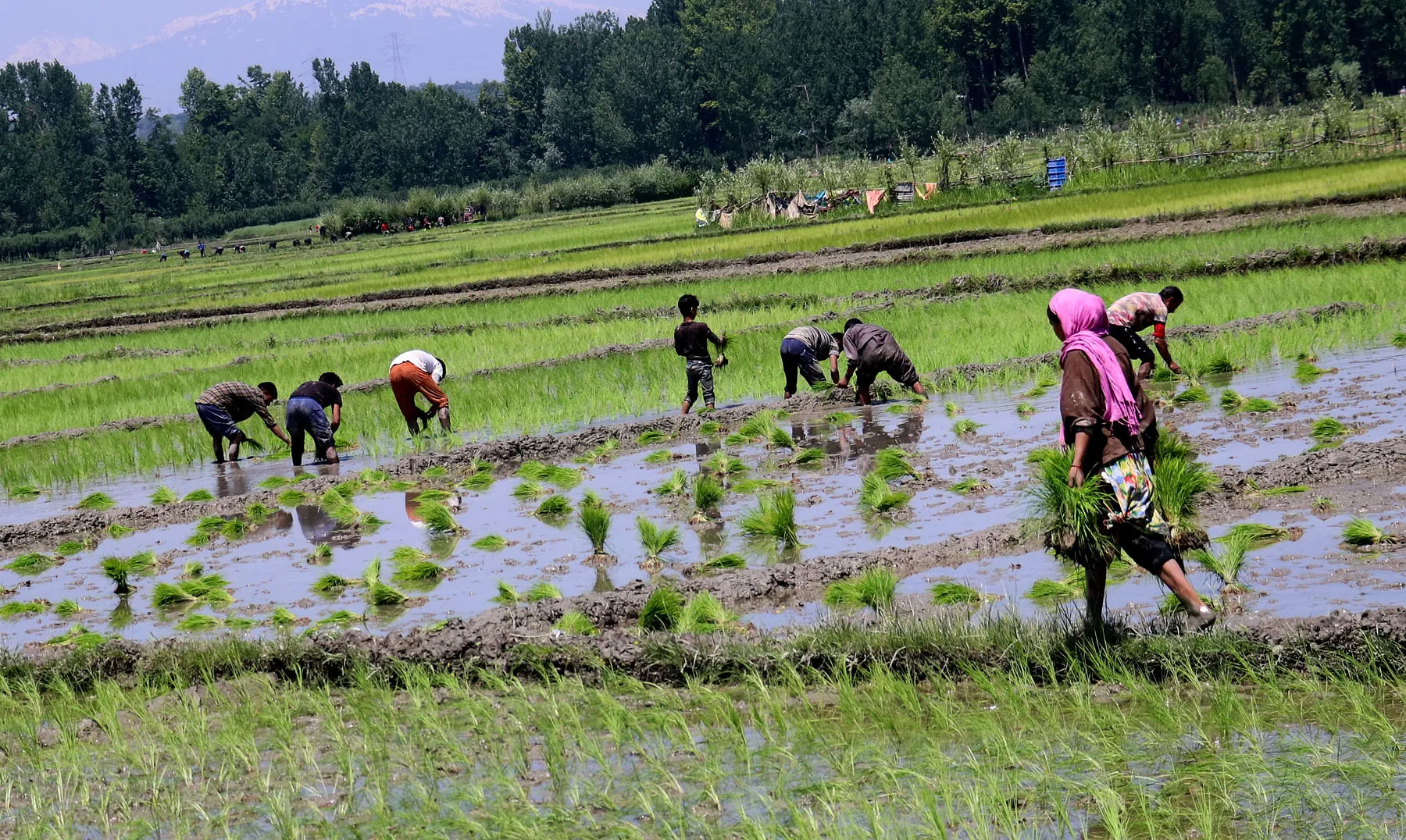Kulgam: Once known as the rice bowl of Kashmir, south Kashmir’s Kulgam district has lost fifty percent of its paddy land to non-agriculture uses in the last two decades.
According to official data, 22,000 hectares in the district are presently under paddy cultivation, which yield Rs 237 crore annually.
“In 2002 we had around 44,000 hectares under paddy cultivation in the district, ” an official said.
The Home-Shalibugh belt of the district comprising Frisal, Yaripora, Qaimoh situate along the Nadi canal was known as one of the major producers of quality rice in the valley.
The famous rice research institute of SKAUST is also located at Khudwani- Qaimoh in the district.
Sources said people in the district of late have been converting vast paddy fields into apple orchards for commercial purposes. Apple gets more returns than rice do.
A decade back, Muhamad Shaban, a marginal farmer from Kujar village would toil hard to eke out a living from the paddy fields. However, he was struggling to meet both ends.
Now, a decade later, Shaban’s apple orchard spread over 8 kanals of land has brought fortunes to him.
“After putting in so much effort, the income generated from rice sale would barely meet the expenses of my family. But after I switched to apple cultivation our financial condition has improved,” he said.
However, according to experts, “shift to fruit cultivation” is not the only reason for the fall in the production of rice. The conversion of agricultural land continues unabated for non-agriculture purposes in absence of monitoring by the government.
“In most of the paddy land, we see commercial structures and this is a worrisome trend,” an Agriculture Official told Greater Kashmir.
He said converting agricultural land (Aabi Awal) for horticulture purposes is never advisable as it would compromise the quality of fruit. “Many farmers who were growing paddy and have switched to apple cultivation are now regretting the decision for the quality of apple is not up to the mark, it is prone to diseases and once harvested there is every likelihood of it getting rotten within a couple of days,”” an official said.
Chief Agriculture Officer, Kulgam, Farooq Ahmad said the trend is worrying. “We are losing our precious land to non-agriculture use particularly to commercial use. It would affect our future generations,” he said.
“We are now entirely dependent for rice from other states. What if tomorrow they won’t be in a position to supply us?” the CAO asked.
He said the farmers are now being provided high-yielding rice varieties and acquainted with the latest farming techniques to increase the production and improve quality.
“We have also introduced farm mechanization schemes for farmers to ease their burden of labor,” the CAO said, adding that the department has also introduced Basmati rice variety trials in the district.
Lack of awareness among the farmers is also considered to be a major reason for the decline in the sector. “Majority of them are not well acquainted with the latest farming techniques. These days advanced techniques are being used for tilling, harvesting, and threshing but still, traditional practices continue thus affecting the production,” Parvez Ahmad, a farmer from Arwani village said.






